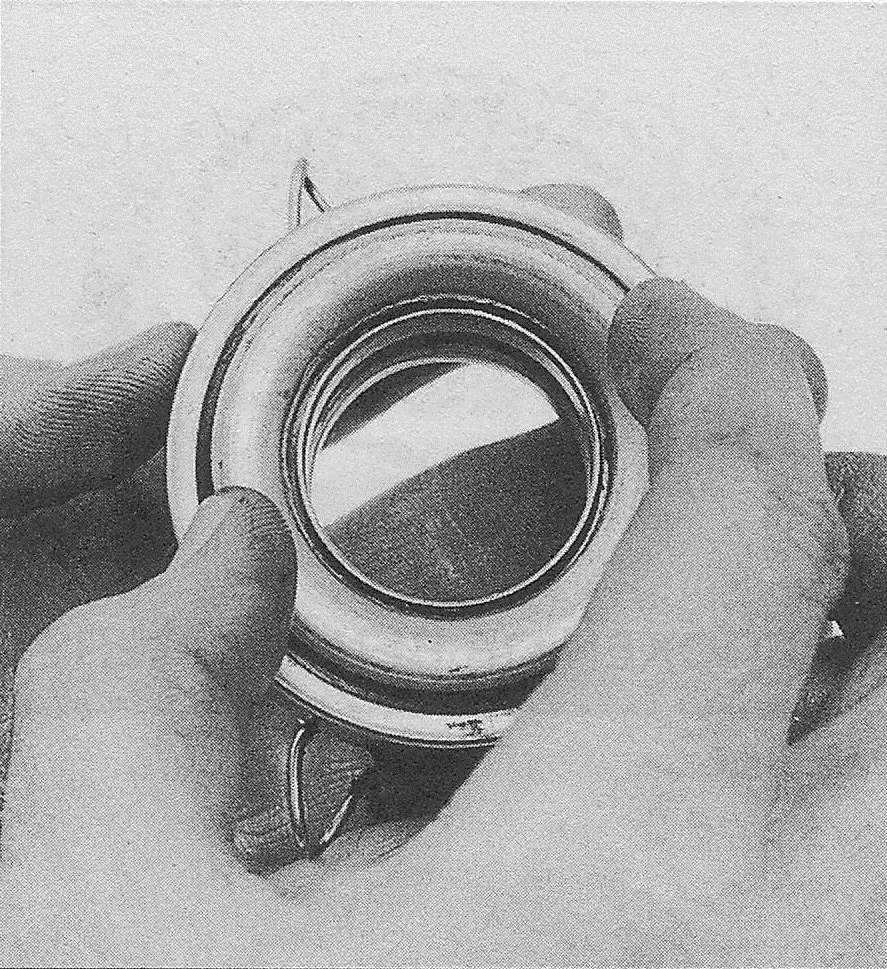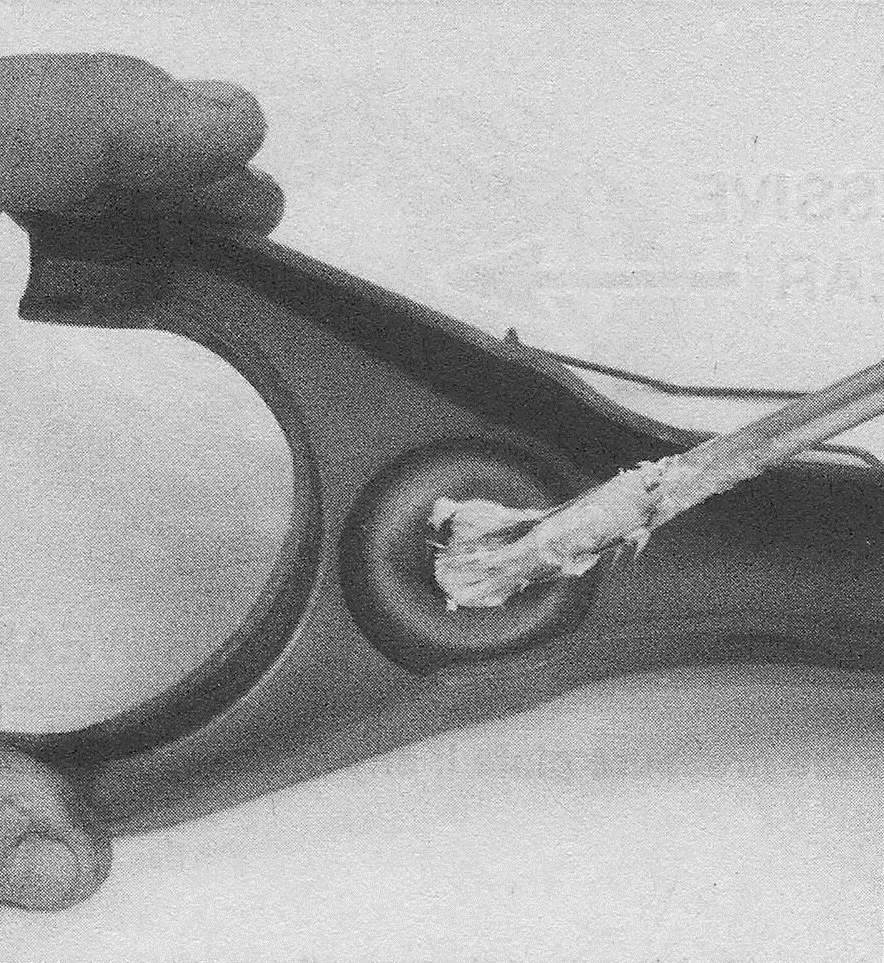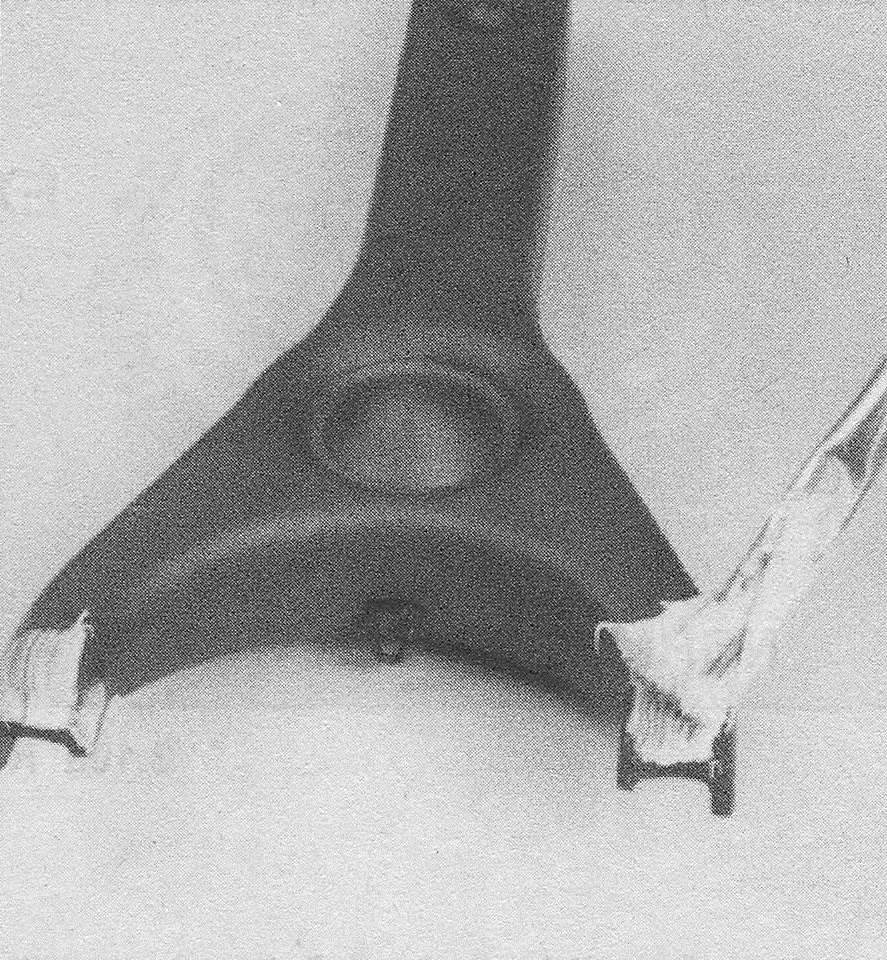Clutch release bearing and lever — removal, inspection and installation
Warning: Dust produced by clutch wear and deposited on clutch components is hazardous to your health. DO NOT blow it out with compressed air and DO NOT inhale it. DO NOT use gasoline or petroleum-based solvents to remove the dust. Brake system cleaner should be used to flush it into a drain pan. After the clutch components are wiped clean with a rag, dispose of the contaminated rags and cleaner in a labeled, covered container.
Removal
Note: This procedure applies to 2009 and earlier models only. On 2010 and later models, the clutch release bearing and release cylinder are an assembly and cannot be replaced separately. See Clutch release cylinder and accumulator — removal and installation for removal and installation.
1. Disconnect the negative cable from the battery (see Engine electrical systems).
2. Remove the transaxle (see Manual transaxle).
3. Reach behind the release lever and dis- engage the lever from the ball stud by pulling on the retention spring, then remove the lever and bearing.
Inspection
4. Hold the bearing by the outer race and rotate the inner race while applying pressure (see illustration). If the bearing doesn’t turn smoothly or if it’s noisy, replace the bearing/ hub assembly with a new one. Wipe the bearing with a clean rag and inspect it for damage, wear and cracks. Don’t immerse the bearing in solvent — it’s sealed for life and to do so would ruin it. Also check the release lever for cracks and bends.
4.4 To check the operation of the bearing, hold it by the outer race and rotate the inner race while applying pressure;
the bearing should turn smoothly;
if it doesn’t, replace it

Installation
5. Fill the inner groove of the release bearing with high-temperature grease. Also apply a light coat of the same grease to the transaxle input shaft splines and the sleeve of the transaxle front bearing retainer.
6. Lubricate the release lever ball socket, lever ends and release cylinder pushrod socket with high-temperature grease (see illustrations).
4.6a On 2009 and earlier models, use high -temperature grease to lubricate the ball stud socket in the back of the release lever …

4.6b the lever ends and the depression for the cylinder pushrod

7. Attach the release bearing to the release lever.
8. Slide the release bearing onto the transaxle input shaft front bearing retainer while passing the end of the release lever through the opening in the clutch housing. Push the clutch release lever onto the ball-stud until it’s firmly seated.
9. Apply a light coat of high-temperature grease to the face of the release bearing where it contacts the pressure plate diaphragm fingers.
10. The remainder of installation is the reverse of removal.